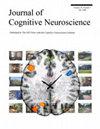Multi-hierarchy Network Configuration Can Predict Brain States and Performance
IF 3.1
3区 医学
Q2 NEUROSCIENCES
引用次数: 0
Abstract
The brain is a hierarchical modular organization that varies across functional states. Network configuration can better reveal network organization patterns. However, the multi-hierarchy network configuration remains unknown. Here, we propose an eigenmodal decomposition approach to detect modules at multi-hierarchy, which can identify higher-layer potential submodules and is consistent with the brain hierarchical structure. We defined three metrics: node configuration matrix, combinability, and separability. Node configuration matrix represents network configuration changes between layers. Separability reflects network configuration from global to local, whereas combinability shows network configuration from local to global. First, we created a random network to verify the feasibility of the method. Results show that separability of real networks is larger than that of random networks, whereas combinability is smaller than random networks. Then, we analyzed a large data set incorporating fMRI data from resting and seven distinct tasking conditions. Experiment results demonstrates the high similarity in node configuration matrices for different task conditions, whereas the tasking states have less separability and greater combinability between modules compared with the resting state. Furthermore, the ability of brain network configuration can predict brain states and cognition performance. Crucially, derived from tasks are highlighted with greater power than resting, showing that task-induced attributes have a greater ability to reveal individual differences. Together, our study provides novel perspectives for analyzing the organization structure of complex brain networks at multi-hierarchy, gives new insights to further unravel the working mechanisms of the brain, and adds new evidence for tasking states to better characterize and predict behavioral traits.多层次网络配置可预测大脑状态和表现
大脑是一个分层的模块化组织,在不同的功能状态下各不相同。网络配置可以更好地揭示网络组织模式。然而,多层次网络构型仍然是未知的。在此,我们提出了一种特征模态分解方法来检测多层次的模块,这种方法可以识别更高层次的潜在子模块,并且与大脑分层结构一致。我们定义了三个指标:节点配置矩阵、可组合性和可分离性。节点配置矩阵表示层与层之间的网络配置变化。可分性反映了从全局到局部的网络配置,而可组合性则显示了从局部到全局的网络配置。首先,我们创建了一个随机网络来验证该方法的可行性。结果表明,真实网络的可分离性大于随机网络,而可组合性则小于随机网络。然后,我们分析了一个大型数据集,其中包含静息和七种不同任务条件下的 fMRI 数据。实验结果表明,不同任务状态下的节点配置矩阵具有很高的相似性,而与静息状态相比,任务状态下模块之间的可分离性更小,可组合性更大。此外,大脑网络配置的能力可以预测大脑状态和认知表现。最重要的是,与静息状态相比,任务状态下的大脑网络配置具有更强的突显力,这表明任务状态下的大脑网络配置更能揭示个体差异。总之,我们的研究为分析多层次复杂大脑网络的组织结构提供了新的视角,为进一步揭示大脑的工作机制提供了新的见解,并为任务状态更好地描述和预测行为特征提供了新的证据。
本文章由计算机程序翻译,如有差异,请以英文原文为准。
求助全文
约1分钟内获得全文
求助全文
来源期刊
CiteScore
5.30
自引率
3.10%
发文量
151
审稿时长
3-8 weeks
期刊介绍:
Journal of Cognitive Neuroscience investigates brain–behavior interaction and promotes lively interchange among the mind sciences.

 求助内容:
求助内容: 应助结果提醒方式:
应助结果提醒方式:


